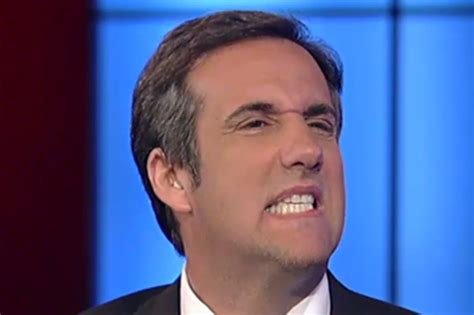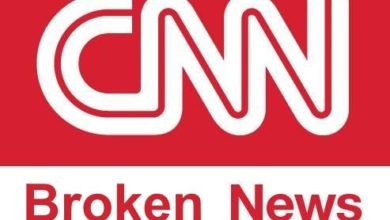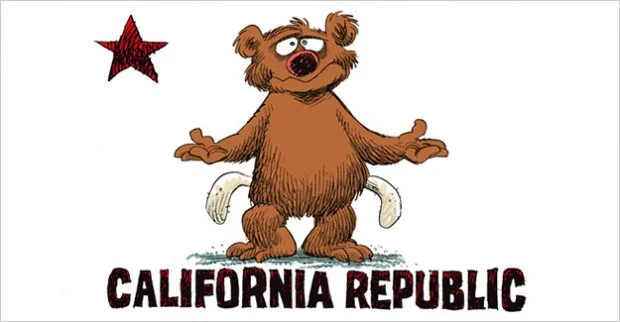CIA Documents Stir Debate Over Alleged Clinton Plan To Link Trump To Russia

- The director of national intelligence declassified two CIA documents this week regarding Hillary Clinton’s alleged role in approving a plan to link Donald Trump to Russia’s election meddling in 2016.
- John Brennan, the former CIA director, wrote in notes in late July 2016 that U.S. intelligence intercepted Russian analysis that asserted that Clinton had approved the plan.
- The intelligence underlying the documents remains classified, making it difficult to discern how the intelligence was collected and what it said about Clinton.
- A flurry of election-related developments occurred in late July 2016, including the release of emails hacked from the DNC and the FBI’s opening of Crossfire Hurricane.
CIA documents declassified this week have stirred a partisan debate over whether Hillary Clinton authorized a plan in July 2016 to link Donald Trump to Russian hackers during the presidential campaign.
John Ratcliffe, the director of national intelligence, approved the release of the documents on Tuesday as part of a broader effort to declassify information related to the CIA and FBI’s intelligence-gathering activities against Trump in 2016.
One of the documents contains handwritten notes that former CIA Director John Brennan wrote following a briefing in late July 2016 for President Obama regarding Russia’s election meddling.
Brennan wrote that U.S. intelligence obtained insight into Russian intelligence analysis which asserted that Hillary Clinton had approved a campaign plan to “stir up a scandal” against Trump “by tying him to Putin and the Russians’ hacking of the Democratic National Committee.”
Late July 2016, when Clinton allegedly approved the plan, saw a flurry of activity both in terms of Russia’s meddling in the presidential campaign and investigations into Trump’s possible links to the Kremlin. The FBI opened its counterintelligence investigation of the Trump campaign on July 31, 2016.
Christopher Steele, a former British spy working for the Clinton campaign and DNC, also compiled memos alleging that the Trump campaign was colluding with the Kremlin on email hacks.
The other declassified document is a CIA memo dated Sept. 7, 2016, that mirrors the information that Brennan wrote in his notes.
The release of the documents has generated controversy in large part because the underlying intelligence remains classified. Ratcliffe said in a letter last week ahead of the declassification that the intelligence community did not know whether Russia fabricated the analysis about Clinton.
Democrats have accused Ratcliffe of releasing Russian disinformation about Clinton aimed at sowing confusion about the U.S. intelligence community’s Trump-related efforts.
Republicans asserted that documents show the U.S. intelligence community was aware that Clinton may have personally approved the dissemination of false allegations that Trump colluded with Russia.
With the intelligence still classified, it will be next to impossible to determine what if anything Clinton approved. But the timeline of events surrounding July 2016 could shed light on any Clinton-approved plan aimed at Trump. Here are key dates for the Clinton campaign’s statements about Trump-Russia collusion, and developments in the Steele dossier.
Spring 2016: Marc Elias, a partner at Perkins Coie, the firm that represented the Clinton campaign and DNC, hires Fusion GPS to conduct opposition research into Donald Trump’s possible ties to Russia.
June 2016: Fusion GPS taps former British spy Christopher Steele to conduct the investigation. Steele, who was an MI6 officer through 2009, relied on a contractor, Igor Danchenko, to collect information about Trump.
July 22, 2016: WikiLeaks dumps emails stolen from the DNC that are now known to have been hacked by a unit of the Russian military intelligence, the GRU.
July 24, 2016: Robby Mook, the Clinton campaign manager, says on CNN that Russia may have released the DNC emails in order to help the Trump campaign.
It is the first direct allegation from the Clinton campaign of Russian involvement in the email hacks.
July 26, 2016: An Australian diplomat named Alexander Downer provided the State Department with a memo of an interaction he had two months earlier with Trump campaign aide George Papadopoulos.
Downer said that Papadopoulos had mentioned during a conversation over drinks that Russians might help the Trump campaign closer to the election by releasing negative information on Clinton.
The State Department provided Downer’s information to the FBI the following day.
July 27, 2016: Trump issues his infamous “Russia, if you’re listening” remark.
“Russia, if you’re listening, I hope you’re able to find the 30,000 emails that are missing,” Trump said at a campaign rally.
Jake Sullivan, a top foreign policy adviser for the Clinton campaign, called Trump’s statement a “national security issue” and accused him of encouraging Russia to commit espionage.
“This has to be the first time that a major presidential candidate has actively encouraged a foreign power to conduct espionage against his political opponent,” Sullivan said in a statement to the media. “That’s not hyperbole, those are just the facts. This has gone from being a matter of curiosity, and a matter of politics, to being a national security issue.”
July 28, 2016: Steele writes a memo that alleges a “well-developed conspiracy of cooperation” between the Trump campaign and Russian government.
The memo cited a source who claimed to be a close associate of Trump who said that Russia was behind the leak of DNC emails to WikiLeaks.
The memo is the first in what would later become known as the Steele dossier to make a specific allegation that members of the Trump campaign helped Russia with the hack-and-release of DNC emails.
That same day, then-CIA Director John Brennan briefs President Obama about intelligence obtained from Russian analysis that Clinton herself may have personally approved an operation to link Trump to the hacks.
Brennan wrote in his notes of an “alleged approval by Hillary Clinton…of a proposal from one of her foreign policy advisors to vilify Donald Trump by stirring up a scandal claiming interference by Russian security services.”
July 29, 2016: Michael Sussmann, a partner at Perkins Coie, meets with Steele in Washington, D.C.
Steele testified in the U.K. earlier this year that Sussmann discussed information he received from a group of cyber analysts who claimed that the computer servers for Alfa Bank were communicating with the Trump Organization.
Steele said that Glenn Simpson, an owner of Fusion GPS, instructed him to dig deeper into Alfa Bank, which is owned by three Russian businessmen.
On the same day, ABC News conducted an interview with a Belarusian-American businessman named Sergei Millian.
Glenn Simpson encouraged the ABC News team to interview Millian, who had claimed in interviews earlier in 2016 to have contacts at the Trump campaign.
Weeks after the dossier was published in January 2017, news reports identified Millian as a key but unwitting source for Steele. The reports attributed the dossier’s claim of a “well-developed conspiracy” involving the Trump campaign and Russia to Millian.
But Igor Danchenko, the primary source for the dossier, told the FBI in January 2017 that he is not certain he ever spoke to Millian. He told investigators he spoke to someone by phone in late July 2016 who he believed was Millian, but that the man on the other end of the line did not identify himself.
July 30, 2016: Steele writes a memo asserting that a source said there was anxiety within the Trump campaign over allegations they were involved in the email hacks.
Steele also meets in Washington, D.C. with Justice Department official Bruce Ohr and his wife, Nellie.
Nellie Ohr was working at the time as a researcher for Fusion GPS.
July 31, 2016: The FBI formally opens Crossfire Hurricane, the counterintelligence probe into whether Trump associates were working with Russians to influence the 2016 election.
A memo cites the information from Alexander Downer, the Australian diplomat, regarding George Papadopoulos.
Sept. 14, 2016: Steele drafts a memo alleging that the founders of Alfa Bank had paid bribes to Vladimir Putin over the years.
Steele later testified that he wrote the memo at the direction of Glenn Simpson, the Fusion GPS founder. A British judge ordered Steele in July 2020 to pay damages to the Alfa Bank founders, saying that the dossier allegations about them were “inaccurate or misleading.”
Sept. 19, 2016: Michael Sussmann, the Perkins Coie partner, meets with then-FBI general counsel James Baker to share information about Alfa Bank.
The FBI’s Crossfire Hurricane team also receives physical copies of several of Steele’s memos from a separate FBI unit who had obtained them.
Sept. 22-23, 2016: On a visit to Washington, D.C., Steele meets with Sussmann and fellow Perkins Coie partner Marc Elias.
Steele also meets with journalists from The New York Times, Yahoo! News, The New Yorker and Washington Post.
Glenn Simpson arranged the meetings.
On Sept. 23, 2016, Yahoo! News reporter Michael Isikoff publishes a story based on Steele’s allegations that Carter Page had secret meetings in July 2016 with two Kremlin insiders. Page has vehemently denied having the meetings.
The Clinton campaign seized on the story, saying in a statement that it was “chilling to learn that U.S. intelligence officials are conducting a probe into suspected meetings between Trump’s foreign policy adviser Carter Page and members of Putin’s inner circle while in Moscow.”
Oct. 21, 2016: The FBI obtains the first of four Foreign Intelligence Surveillance Act (FISA) warrants against Carter Page. An inspector general’s report said that the Steele dossier was “central and essential” to the bureau’s decision to pursue the surveillance warrants.
Oct. 31, 2016: Slate publishes a story that alleges a covert link between the servers for Alfa Bank and the Trump Organization.
The story, published by Franklin Foer, suggests that the secret communications channel could have been a conduit for election-related collusion.
Sussmann, the Perkins Coie partner, is later revealed as a key source for the story.
Hillary Clinton tweeted out a statement from her campaign responding to the Slate story.
“This could be the most direct link yet between Donald Trump and Moscow,” Jake Sullivan, the Clinton campaign’s foreign policy adviser, said in the statement.
Computer scientists have apparently uncovered a covert server linking the Trump Organization to a Russian-based bank. pic.twitter.com/8f8n9xMzUU
— Hillary Clinton (@HillaryClinton) November 1, 2016
That same day, Mother Jones publishes the first story to quote directly from Steele. The story lays out Steele’s allegation that the Russian government was blackmailing Trump.
Nov. 8, 2016: Donald Trump defeats Hillary Clinton in the election.
Jan. 10, 2017: BuzzFeed News publishes the dossier.
Jan. 12, 2017: According to the IG report, the FBI received evidence that Russian intelligence operatives may have fed disinformation to Steele.
Oct. 24, 2017: Republicans on the House Intelligence Committee force the release of bank records which show that Perkins Coie hired Fusion GPS.
April 18, 2019: The special counsel said in a report that there was insufficient evidence to show that the Trump campaign or any Trump associates conspired with Russia or acted as agents of Russia. The report also said that no Americans were involved in Russia’s hacking efforts or helped release the stolen emails.
Dec. 9, 2019: The Justice Department inspector general releases its report on Crossfire Hurricane. It says that the FBI determined in February 2017 that the Alfa Bank allegation was false.
March 17, 2020: Steele testifies in a defamation case filed by the owners of Alfa Bank that he was told in 2016 that Hillary Clinton was aware of his investigation of Trump.
“We understood the candidate herself was aware of the reporting at least, if not us,” Steele wrote in a note that was read out at the defamation trial.
***
A spokesman for Clinton told Politico last week that the allegations from the CIA memos are “baseless bullshit.”
Brennan confirmed in an interview on Tuesday that he wrote the notes that were partially declassified. He did not discuss the underlying intelligence and indicated that he did not know one way or the other whether the allegation about Clinton was accurate.
“If in fact what the Russians were alleging, that Hillary was trying to highlight the reported connections between Trump and the Russians — and that’s a big ‘if’ — there is nothing at all illegal about that,” Brennan said on CNN.
Content created by The Daily Caller News Foundation is available without charge to any eligible news publisher that can provide a large audience. For licensing opportunities of our original content, please contact licensing@dailycallernewsfoundation.org



